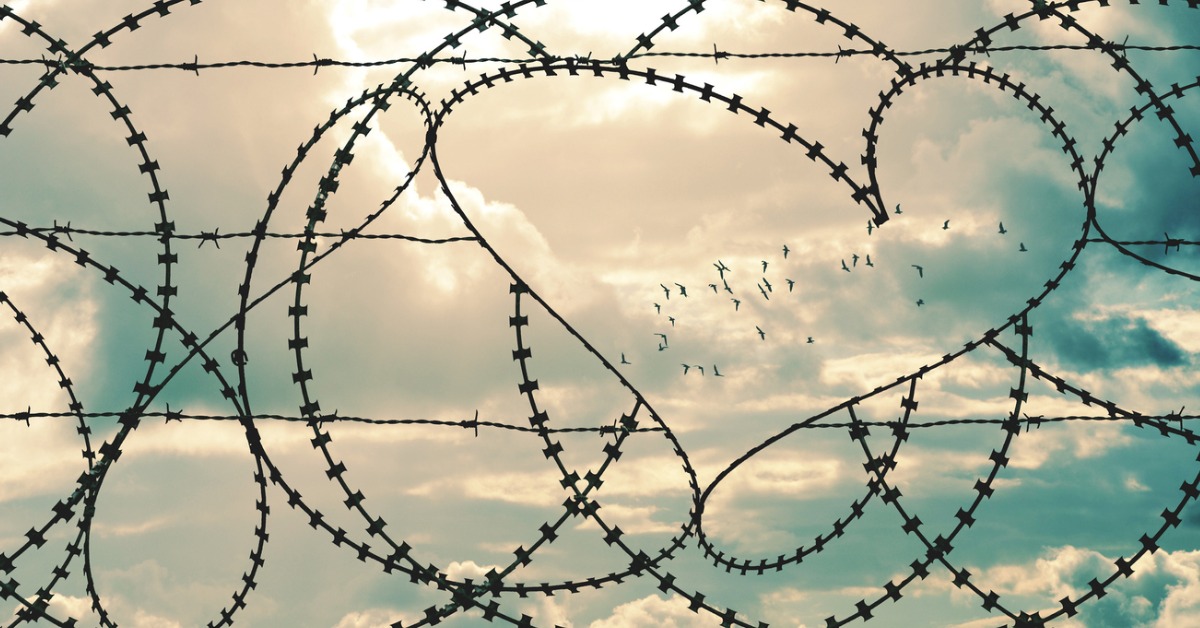
02 Aug How to Better Serve the Underserved: The Criminal Justice System
Part Five in a Series
Within the United States, many mental health and criminal justice experts believe that jails and prisons have become our nation’s largest psychiatric facilities. This may be surprising to someone who does not have frequent contact with the American criminal justice system, but it will not shock anyone who has worked with this population or who has experienced it through friends and family.
According to the National Alliance on Mental Illness, there are over 2 million instances of people with serious mental illness being placed into the criminal justice system. Currently, 37% of individuals in state and federal prisons, and 44% of those in local jails, have a history of mental illness, with suicide being the leading cause of death for people in local jails. Statistics on female prisoners are even more striking – 66% of women in prison report a history of mental illness.
Clinicians working with incarcerated or formerly incarcerated clients must learn as much as they can about serving this underserved population. Without more knowledge and better-informed care, the costs of mass incarceration will continue to rise. This doesn’t just affect clients, but their families and communities as well.
Behavioral and Mental Health Challenges for Incarcerated Individuals
At any given time, there are over 2.3 million incarcerated Americans being held in various institutions including federal and state prisons, local jails, immigration detention, and juvenile facilities. With not quite 1% of the U.S. population incarcerated, it’s vitally important to learn how to care for individuals within the criminal justice system.
The easiest way to understand how to better serve this population is to understand the nuances of the challenges they face.
Inadequate Treatment in Prison: Despite the overwhelming evidence showing that high numbers of incarcerated individuals suffer from mental health issues, treatment options within the criminal justice system remain inadequate. One survey found that 50% of individuals who had previously been medicated for a mental health condition were not offered pharmacotherapy in prison. 70% of youth in the juvenile justice system have a diagnosable mental health condition, yet few get help.
Even if an individual pursues an alternate treatment plan like therapy, resources in prisons are extremely limited. Unfortunately, a lack of treatment options directly correlates to an increase of rule breaking and disciplinary problems, which often leads to increased time in solitary confinement.
Lack of Follow-Up: When an individual leaves incarceration, the lack of pre-release counseling or follow-up after release can make it challenging for them to re-enter into society. Supportive interventions like integrated family counseling and therapy can help reduce their chances of recidivism.
High Levels of Income Inequality: There are considerably more low-income individuals within the criminal justice system. Many of these individuals enter and leave prison without the ability to pay for adequate mental health care, so they don’t receive the mental health and substance use services they desperately need.
Improving Care for Individuals Within the Criminal Justice System
If we want to move away from treating the criminal justice system as a de facto mental health facility, we must improve the resources offered in prisons and jails, and innovate better treatment options for clients after their release.
- Involve Family Members: In both the youth and adult criminal justice systems, there are positive correlations between family involvement and a decline in recidivism. Clinicians can help create stronger community bonds around their clients by encouraging family involvement in their treatment, leading to both improved clinical outcomes and a lower chance of retrogression.
- Encourage Participation in a Post-Arrest Diversion Program: Depending on your state, your client may have access to post-arrest diversion programs, which are designed to redirect mentally ill individuals away from prison or jail and into dedicated mental health programs. Clinicians can help by encouraging clients to seek out and engage with these programs.
- Use a Behavioral Health EHR to Track Metrics: An individual that’s been caught up in the criminal justice system will often have several comorbidities, such as a mental health diagnosis along with substance use issues. Tracking the details of their needs and care plan can be complex. A behavioral health EHR can collect these complex metrics, and provides an easily accessible way to measure the success of current interventions.
- Help Clients Develop a Detailed Transition Plan: For an individual leaving incarceration, the first days and weeks of their release are the most critical. As much as you can, help clients plan out their transition, introducing them to other specialists as needed.
Additional Resources
Serving this underserved population will help more than just the incarcerated individual. Without proper mental or behavioral healthcare, poor clinical outcomes for the individual can quickly lead to recidivism, affecting their family, the victim(s) and their families, and the community at large.
To improve your standard of care, you can find additional resources on caring for individuals within the criminal justice system here:
National Commission on Correctional Health Care
Cognitive Behavioral Therapy Resources from the National Institute of Corrections
“How to Better Serve the Underserved” is a multi-part series. Find the previous blogs here:
How to Better Serve the Underserved: Racial and Ethnic Groups
How to Better Serve the Underserved: Caring for the Mental Health of Veterans and Active Military
How to Better Serve the Underserved: The LGBTQ Community
How to Better Serve the Underserved: Cultural Traditions and Religious Bias



Sorry, the comment form is closed at this time.